SUMMARY
This is AI generated summarization, which may have errors. For context, always refer to the full article.
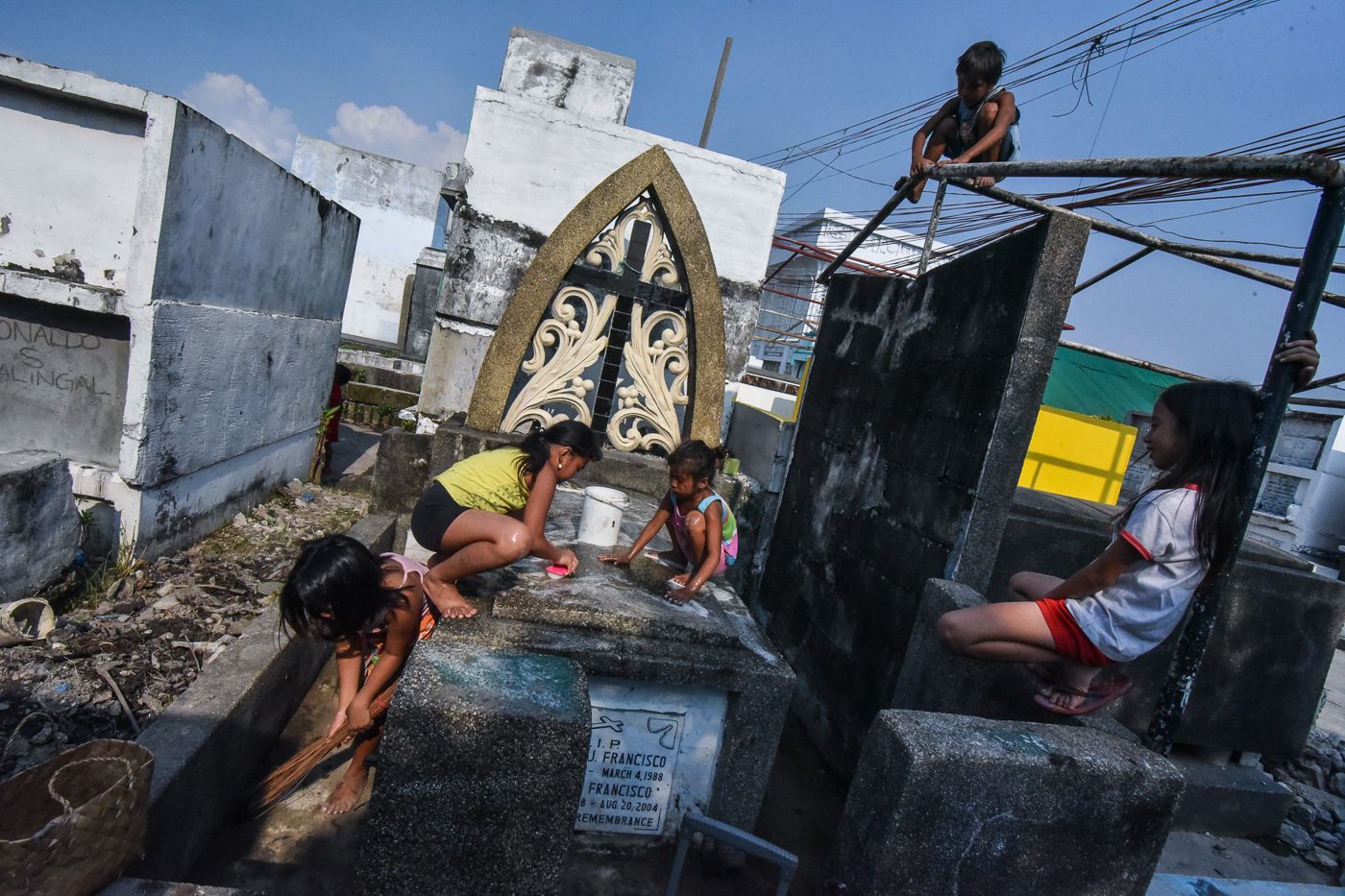
MANILA, Philippines – November 1 has always had a profound place in the heart of family-centric Filipinos.
The usually quiet cemeteries across the country are filled to the brim with families visiting to pay their respects to their departed loved ones every All Saints’ Day. Some even travel to their provinces, braving traffic and long lines in terminals, just to spend time with relatives.
But days before the Undas rush, cemeteries are already bustling with people looking for opportunities to make a living among the dead. Among them are families who call the Navotas Public Cemetery home.
Not long after stepping into the 1.5-hectare burial grounds, groups of children as young as 9 are bound to greet visitors and offer a variety of services for tombs. One of them is 14-year-old Anya* who has been cleaning tombs every Undas season since she was 9 years old. She first started helping her parents, tomb caretakers themselves, but eventually led a group of young girls on her own.
When Rappler interviewed her on Friday, she said they already cleaned 3 tombs since her semestral break began that week. It was less than the number they cleaned last year, she added.
This has been a usual sight in the cemetery ever since families set up shanties inside. Small hands are used to scrub cemented tombs, drag buckets of water, and sweep soot away from corners – all to make the final resting place of a loved one look good come All Saints’ Day.
The pay varies, Anya said. Sometimes they get P100 ($2)* for one tomb, sometimes P300 ($6), all depending on how generous the client is. They don’t get paid, however, until the families return on November 1.
When asked what she’ll do with this year’s earnings, the 3rd of 4 children had her own family in mind.
“Ibibigay ko sa kanila tapos kung may tira, bibili ako ng damit,” she told Rappler. “Pero paghahatian pa namin lahat ng kita.” (I will give to them and if there’s more, I can buy clothes. But we still have to split everything first.)
These children who double as tomb cleaners during Undas are part of families who have been living inside the cemetery for many years. From playgrounds during ordinary days, the stacked tombs become opportunities to make money to put food on the table.
It is tiring, Anya said, but they have to work to help their parents. She is just happy that she gets to spend time with her friends while cleaning.
‘Competition’
Deeper into the cemetery, past the family mausoleums owned by Navotas’ old rich, you’ll find the apartment-style tombs that are at least 10 feet high.
Settled in between rows are men and kids as young as 8 years old holding worn-out brushes and tin cans of white paint.
“Papintura po (You want paint)?” at least 3 boys asked in chorus as they trailed an old lady and her companion – two of the few visitors that day in the public cemetery.
For P50 ($1) to P100 ($2), weathered tombs are given fresh paint jobs just in time for All Saints’ Day.
The “lucky” boy who gets the job, however, has to climb the high apartment tombs that cater mostly to the dead who belong to the lower class.
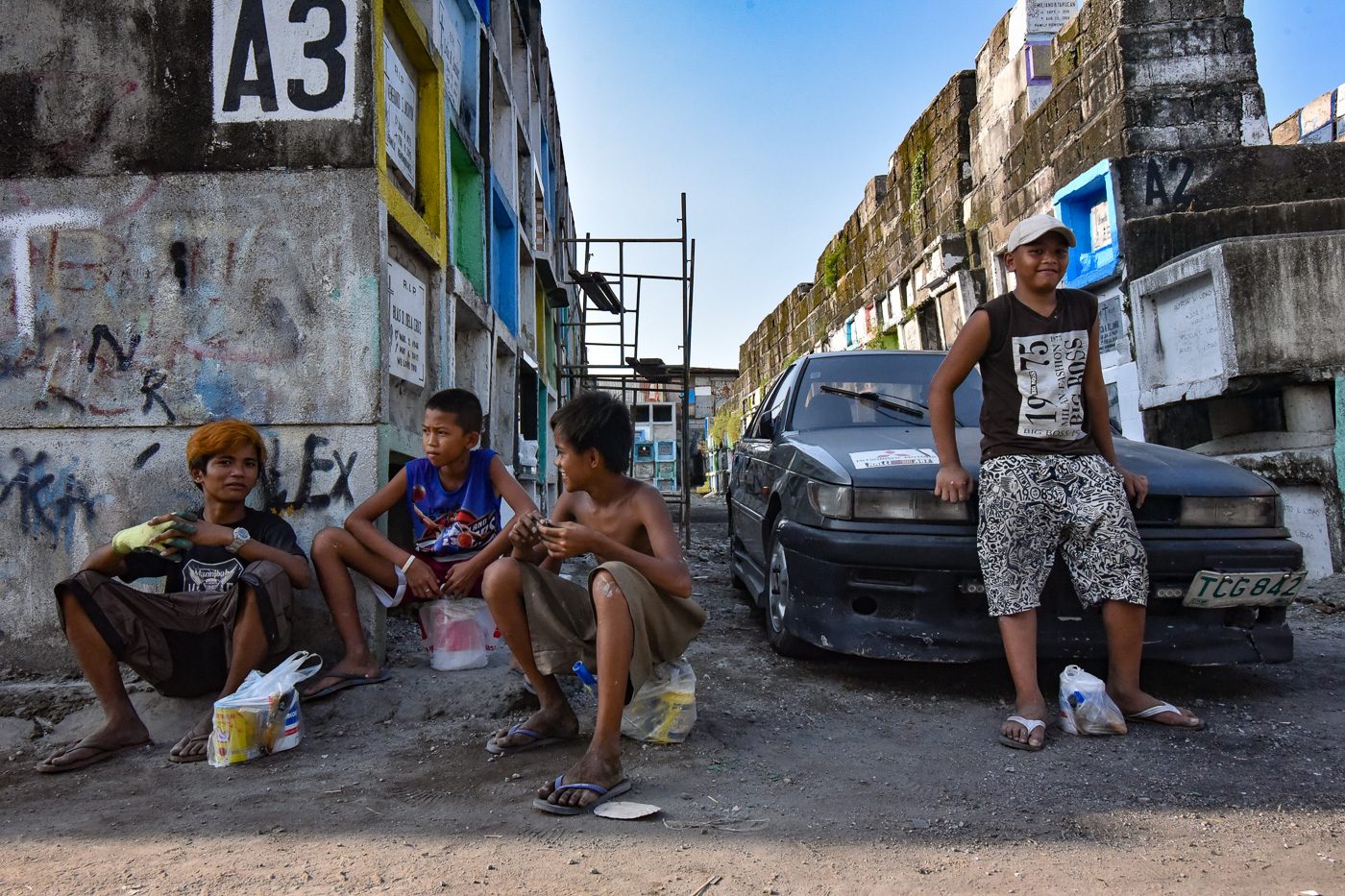
Sometimes they use a ladder made of discarded wood and bamboo, sometimes they move upwards with only their arms as support.
It is quite usual to see a boy jumping from one tomb to another just to get the job done.
Despite the danger that comes with the job, it does not pay well – even if the Navotas Public Cemetery is the final resting place of more than a thousand people.
“Marami po kasi kaming nagpipintura dito kaya agawan,” 13-year-old Jun* said. “Minsan may away pa kasi sasabihin siya nauna.” (There are a lot of us painting here so it’s really competitive. Sometimes we fight because they say they’re the first ones here.)
On Friday, October 27, Rappler counted at least 15 boys offering to paint tombs. They were huddled on the ground, talking among themselves, or teasing other kids.
The number excludes adults who are more used to doing intricate designs. These painters have a more stable roster of customers.
When asked what they do once Undas is over, Jun, an out-of-school youth, just shrugged. “Kung ano-ano lang (Anything).”
Informal sector workers
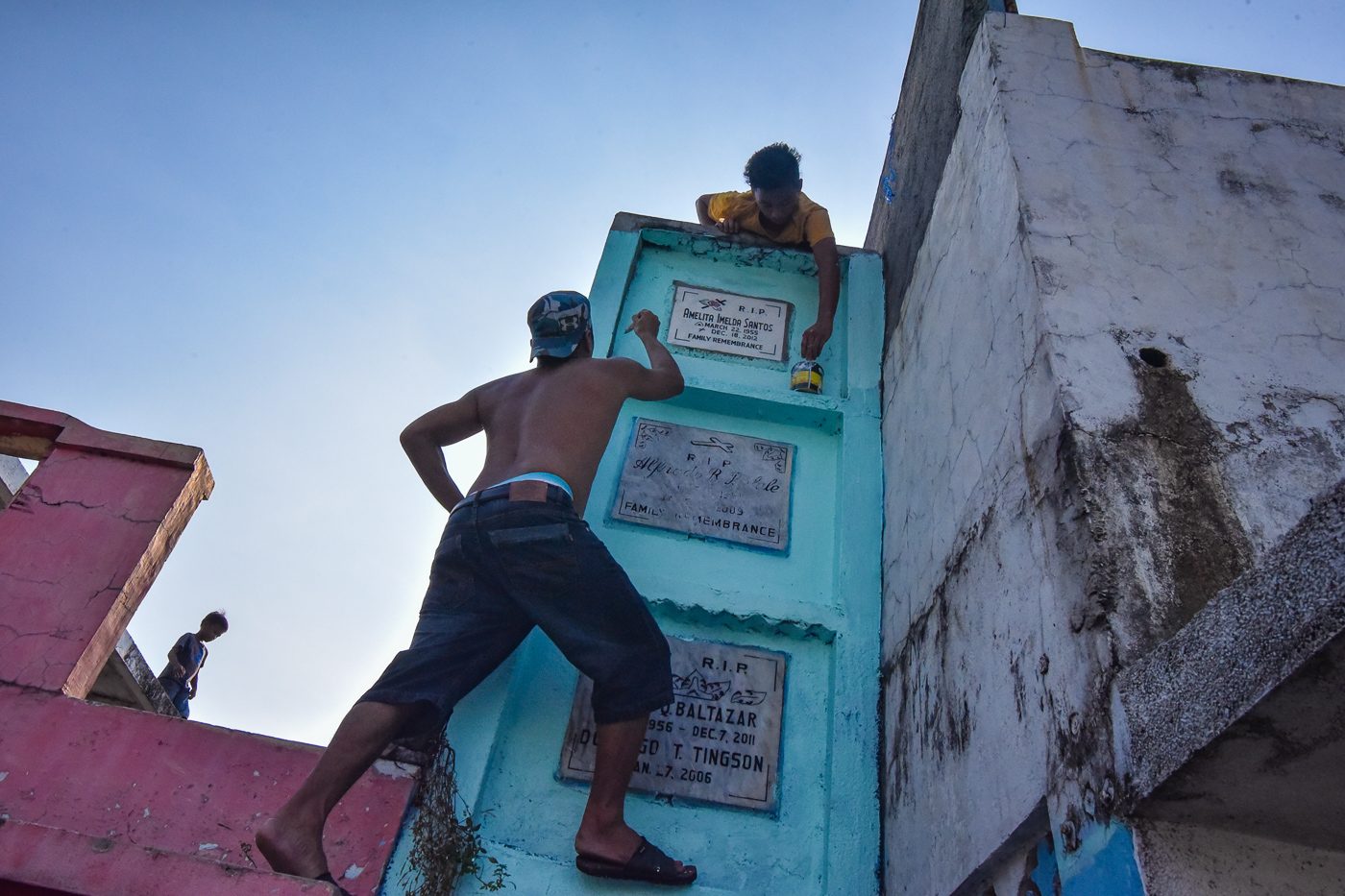
People trying to earn a living among the dead in Navotas Public Cemetery in preparation for Undas are among the 15.6 million informal sector workers in the Philippines.
Informal economy workers as those “independent, self-employed, small-scale producers and distributors of goods and services,” according to the International Labor Organization (ILO).
They are “highly vulnerable” because they lack the social protection that other employees enjoy, such as health benefits. (READ: What you need to know about PH’s informal sector workers)
But resorting to a job in the informal economy bridges the gap left by high unemployment rate and poverty incidence in the Philippines. Earnings from this type of job put food on the table despite the lack of security and seemingly substandard labor practices.
This is why even people who have other temporary jobs also make the most out of the pre-Undas rush. They sell goods – mostly packed meals, cold drinks, and cigarettes – to both early visitors and workers inside the cemetery.
But vendors only have until Tuesday, October 31, to recover their capital as rules state that stalls will no longer be allowed inside the cemetery on November 1.
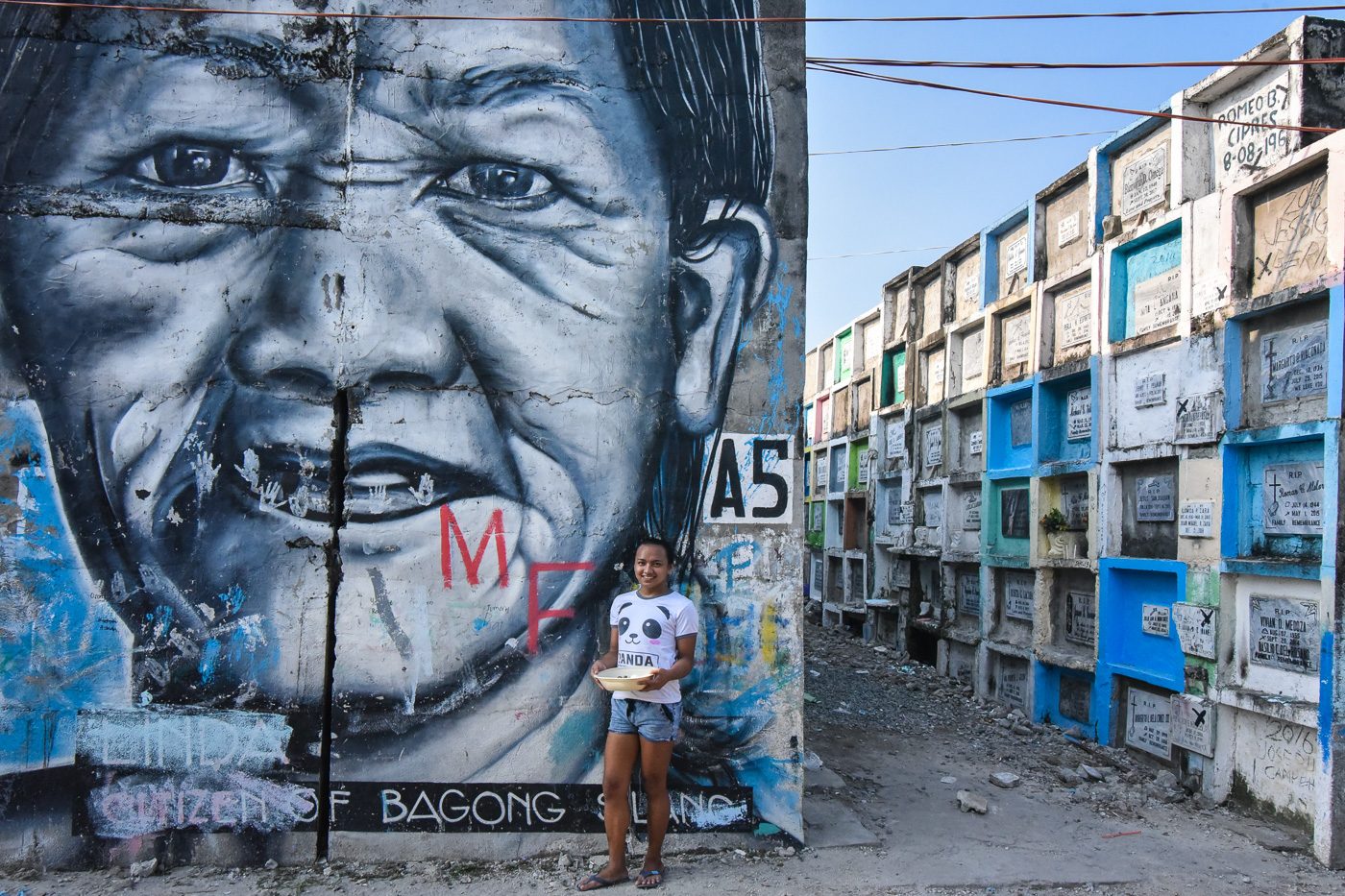
Prohibiting vendors on the day when the crowd is expected to balloon in number lowers chances of earning more. One vendor told Rappler that they earn less and less every year because of this rule.
Some, however, are more “creative” and have gone beyond just setting shop in one corner of the cemetery.
Donna Mae and her friends walk around to peddle boiled eggs and coffee to people either visiting a dead loved one or there to work.
Since the start of preparations for Undas, Donna Mae has been going to the cemetery to take advantage of the crowd even if it means travelling back and forth from Bulacan where she lives.
The group even sings and laughs as they walk along the cemetery’s only road, while trying not to get run over by cement mixer trucks. But the cemetery also holds painful memories for her. It is the final resting place of her friend, Joana Layson, who was killed by unknown vigilantes inside her Navotas Public Cemetery shanty in January 2017.
Life goes on, she said, and there is money that needs to be earned.
“Nakakapagod pero masaya naman kasi nandito iyong mga barkada ko,” Donna Mae told Rappler. “Nagtatawanan na lang kami.” (It’s tiring but it’s fun because I’m with my friends. We all just laugh.)
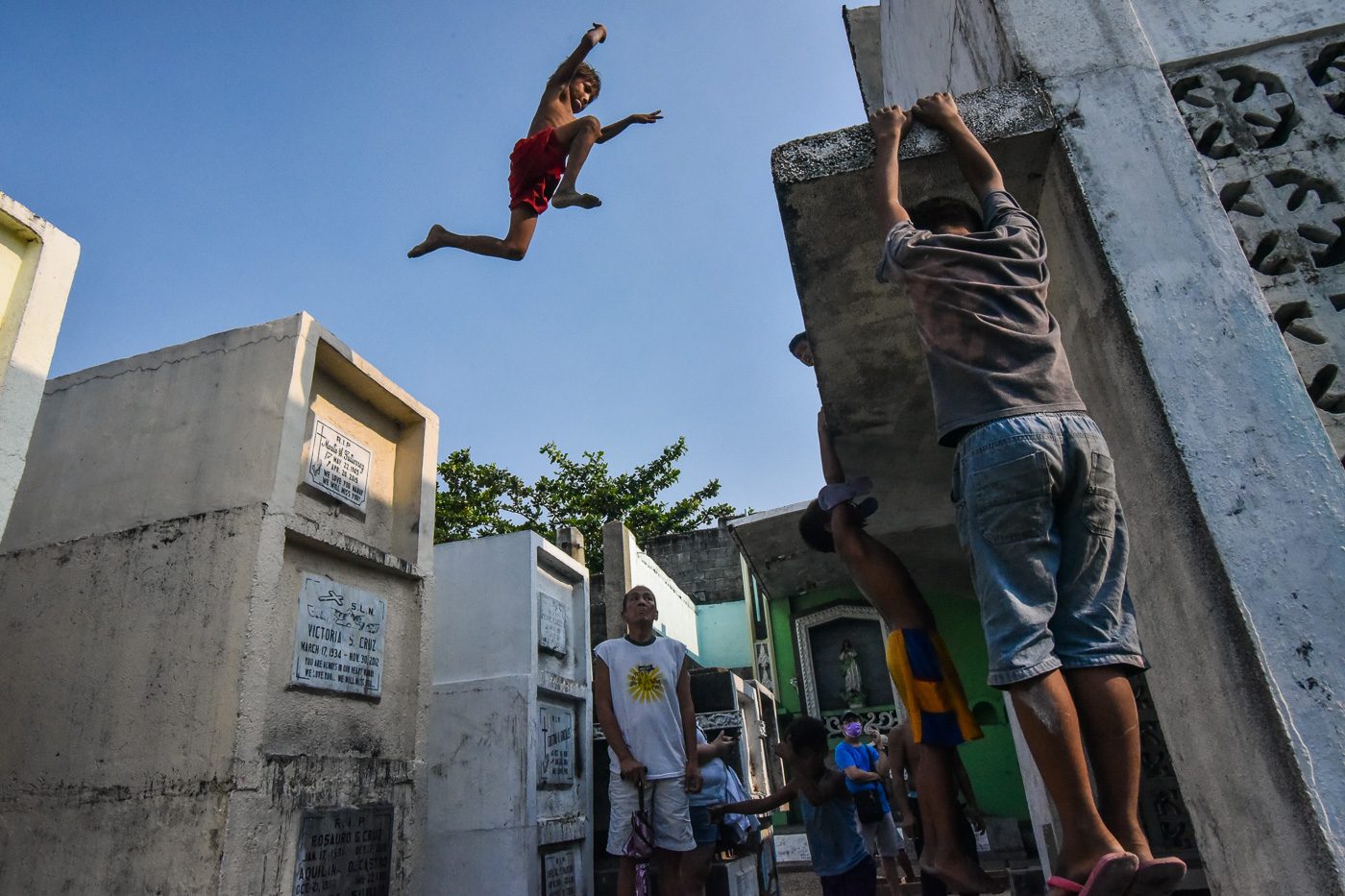
The peak of the informal economy inside Navotas Public Cemetery will probably last until November 2.
After Undas, the people will move on to other temporary jobs.
They might set up shop to sell cigarettes on the small sidewalk outside the cemetery where jeepneys pass, they might find other construction-related jobs that pay better sans benefits, and the children might go back to school.
But one thing is most likely: they will come and work again in the cemetery same time next year. – Rappler.com
*Names have been changed as requested by the minors
*$1 = P51.57
Add a comment
How does this make you feel?
There are no comments yet. Add your comment to start the conversation.